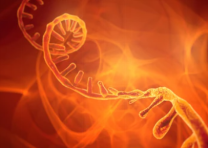
High-throughput sequencing technology has become the most popular technology for biological researchers solving life science problems because of its speed, low cost, and high throughput. Transcriptome sequencing is a technique for sequencing all mRNA produced by cell or tissue transcription under specific conditions. It is not limited to studying individual genes but can study non-model organisms without a reference genome.
Total RNA extraction was performed according to the TRNzolA method as follows:
Freshly frozen molluscan tissues were removed from liquid nitrogen at -80 °C, added to a pre-cooled mortar and quickly ground to a powder with liquid nitrogen, and then transferred to a centrifuge tube with a mixture of D-solution and 2-mercaptoethanol. After extraction, add an equal volume of phenol-chloroform, centrifuge, add an equal volume of isopropanol to the supernatant at room temperature, centrifuge, discard the supernatant, and wash the RNA precipitate with ethanol and dry in air.
The obtained cDNA libraries of good quality were sequenced using a high-throughput sequencing platform, and the sequencing directly produced raw data. Base quality values are used to measure sequencing accuracy. The reliability of base identification increases with increasing base quality values, and the likelihood of base mis-sequencing decreases with increasing base quality values.
There will be very few reads with artificial sequences such as connectors and sequencing primers in the raw data, which will affect the subsequent analysis, so they need to be truncated from the reads, and the reads obtained after truncation are clean reads.
Sequence generics are assembled into fragment overlap clusters, which are subsequently assembled into transcripts according to the steps, followed by transcripts, single-element sequences, and unassembled fragment overlap clusters bound to independent transcriptomes with programmed similarity confidence.
The reliability of transcriptome data analysis results is positively correlated with the quality of transcriptome sequencing libraries; therefore, to ensure the quality of sequencing libraries, quality assessment of transcriptome libraries from different perspectives is required, and the assessment metrics are: randomness test of fragmented mRNA, insert length test and saturation test of transcriptome sequencing data.
Gene annotation is performed after Blast comparison with homologous sequences, including: molecular function, biological process, and cell composition.
DESeq analyzes differential expression between sample sets to obtain the set of differentially expressed genes between two samples. In the screening process, the differential multiplicity, i.e., the ratio of expression between two samples (groups) FC ≥ 2, was used as the screening criterion and FDR < 0.01 as the threshold value, and the number of up- and down-regulated genes was counted. After screening, GO annotation and KEGG metabolic pathway analysis was performed on the differentially expressed genes.
If you are interested in our services, or if the service you want is not listed, please feel free to contact us, and we will get back to you as soon as possible.